The Variety in Asian Home Decor

Asian home decor is fascinating– nobody can deny it. We love emulating what we see, even if it’s thousands of kilometers away. In our post today, we want to show you different sides of Asian home decor to inspire you for your own home decor.
Asian home decor – each country is its own world
There is no such thing as a set “Asian decor”. There are simply too many trends and ideas that make up the umbrella term. While most people refer to China or Japan when they talk about Asian decor, there are other countries with their own decor styles like South Korea, Thailand, Cambodia or Vietnam.
Pulling together a home decor inspired by Asian countries doesn’t mean lumping all of their different elements together.
Of course, there are common factors among their decor styles such as the use of natural colors and simple backgrounds. These common factors can help us improve our lifestyle while helping us relax at home after a long day at work.
Geometrical order, minimal mess and use of natural textures (silk, rice paper, bamboo or cedar) are all essential in Asian settings. Wicker, tatami or even traditional clothing should all be present in your decor. And of course, don’t forget about tea sets.
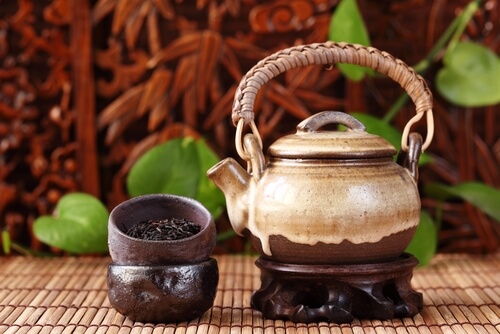
Asian art is simple, very stylized and doesn’t leave viewers indifferent. Black is the most typical color though white, red and gray are also present. In addition, many Asian countries value minimalism, thus thoughtless or impulsive buys have no place in home decor.
Due to overpopulation, many people who live in an Asian country live in a small space. Consequently, they can’t hoard useless things. But despite being small, Asian homes seem bigger because they’re not crammed full.
Examples of Asian home decor
As we mentioned earlier, there is no one set type of Asian decor. In our list, we’ve compiled the most popular styles to have reached the West:
1. South Korea
Asian home decor varies from country to country– it’s obvious upon observation. In South Korea, home decor tends to be minimalist with light walls and contrasting furniture. South Korean home decor undoubtedly has the most modern feel where big windows and furniture with clean, straight lines prevail.
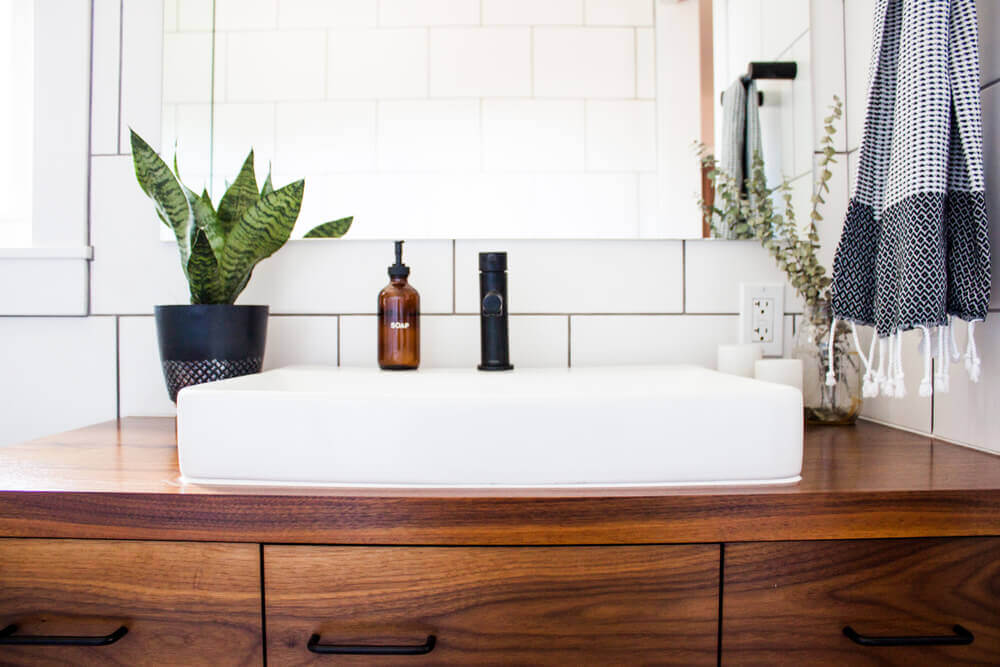
2. China
Chinese home decor is exotic, spiritual and full of shiny black and gold details, red elements (which bring good luck) and wooden furniture. Floors are dressed with cotton rugs with floral patterns.
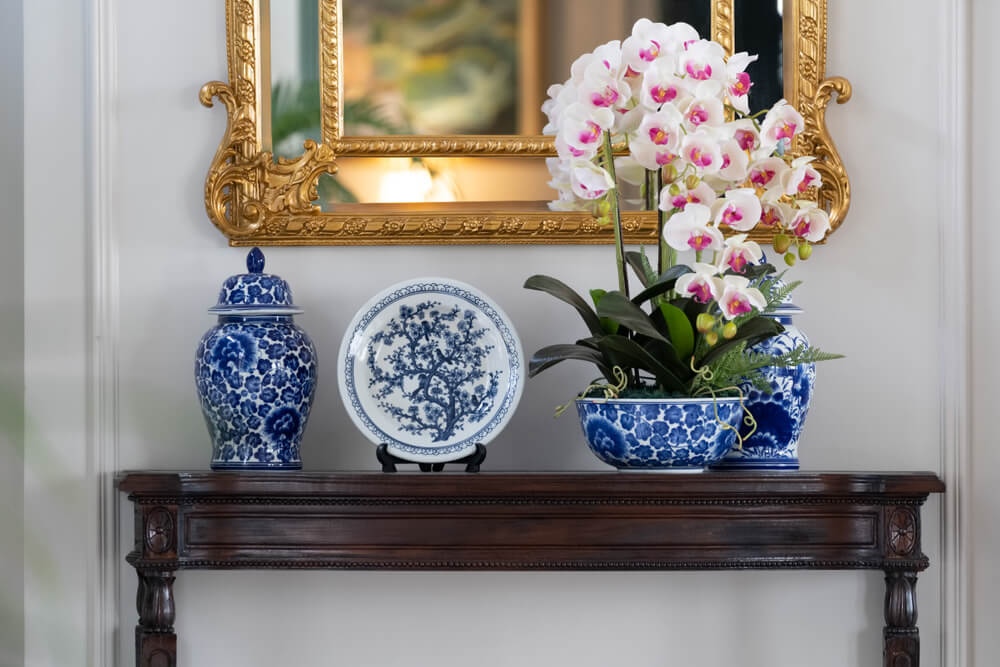
3. Japan
Somber, mute colors (browns, grays or greens) and multi-use furniture pieces are common due to reduced space. In Japanese home decor, many of the furniture pieces work as decor alongside natural elements such as plants or rocks. In traditional rooms, you might find a bonsai, shoji door, paper screen, and a bamboo curtain.
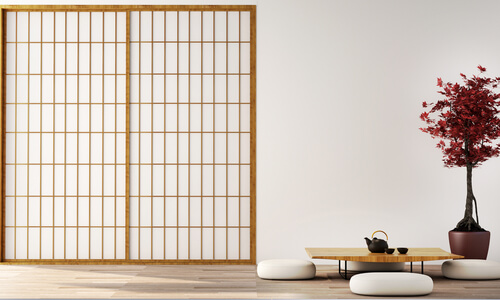
4. India
You might not think of India at first when you think of Asian home decor, but it has plenty to offer in terms of home decor. Indian home decor is elegant, colorful and ornamental.
Gold, red, blue and green tones are very popular. In addition, traditional and modern furniture pieces come together in a single setting. Images of gods such as Ganesha, baskets of flowers, elephant-shaped elements and hand-embroidered cushions are all essentials.
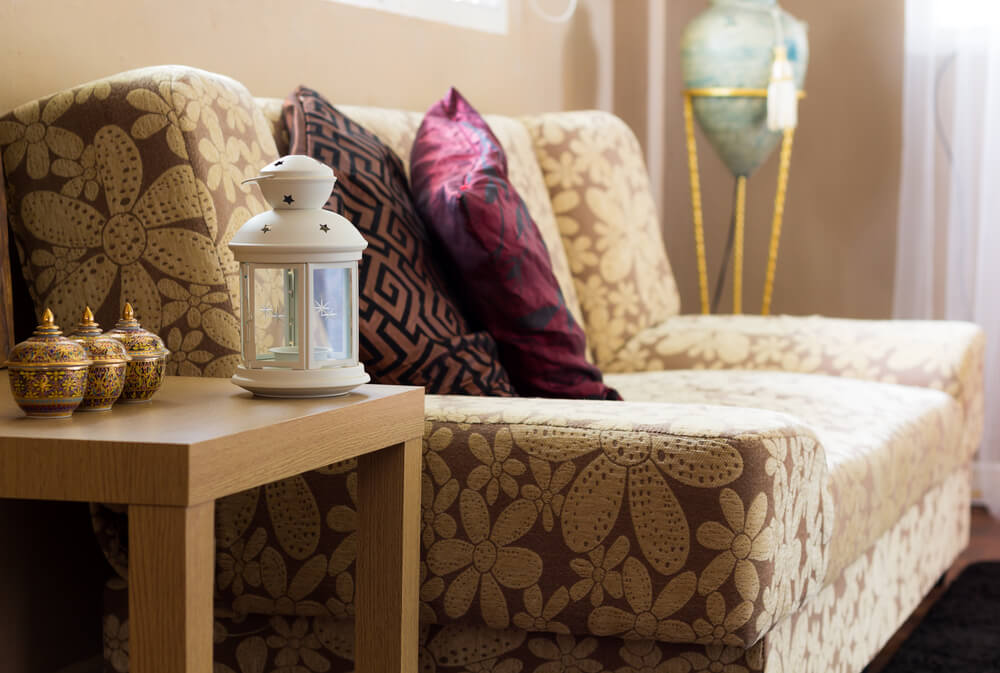
If pictures or a trip to the continent itself– if you’re lucky– have left you curious about Asian home decor, we recommend focusing on one type for your home. Avoid mixing decor styles as the result could be chaotic. Or, you can try a different style for each room in your home. For example, one style could be Japan-inspired, another Indian, a Korean kitchen, a Chinese dining room… Take a trip around Asia right in your very home!
Asian home decor is fascinating– nobody can deny it. We love emulating what we see, even if it’s thousands of kilometers away. In our post today, we want to show you different sides of Asian home decor to inspire you for your own home decor.
Asian home decor – each country is its own world
There is no such thing as a set “Asian decor”. There are simply too many trends and ideas that make up the umbrella term. While most people refer to China or Japan when they talk about Asian decor, there are other countries with their own decor styles like South Korea, Thailand, Cambodia or Vietnam.
Pulling together a home decor inspired by Asian countries doesn’t mean lumping all of their different elements together.
Of course, there are common factors among their decor styles such as the use of natural colors and simple backgrounds. These common factors can help us improve our lifestyle while helping us relax at home after a long day at work.
Geometrical order, minimal mess and use of natural textures (silk, rice paper, bamboo or cedar) are all essential in Asian settings. Wicker, tatami or even traditional clothing should all be present in your decor. And of course, don’t forget about tea sets.

Asian art is simple, very stylized and doesn’t leave viewers indifferent. Black is the most typical color though white, red and gray are also present. In addition, many Asian countries value minimalism, thus thoughtless or impulsive buys have no place in home decor.
Due to overpopulation, many people who live in an Asian country live in a small space. Consequently, they can’t hoard useless things. But despite being small, Asian homes seem bigger because they’re not crammed full.
Examples of Asian home decor
As we mentioned earlier, there is no one set type of Asian decor. In our list, we’ve compiled the most popular styles to have reached the West:
1. South Korea
Asian home decor varies from country to country– it’s obvious upon observation. In South Korea, home decor tends to be minimalist with light walls and contrasting furniture. South Korean home decor undoubtedly has the most modern feel where big windows and furniture with clean, straight lines prevail.

2. China
Chinese home decor is exotic, spiritual and full of shiny black and gold details, red elements (which bring good luck) and wooden furniture. Floors are dressed with cotton rugs with floral patterns.

3. Japan
Somber, mute colors (browns, grays or greens) and multi-use furniture pieces are common due to reduced space. In Japanese home decor, many of the furniture pieces work as decor alongside natural elements such as plants or rocks. In traditional rooms, you might find a bonsai, shoji door, paper screen, and a bamboo curtain.

4. India
You might not think of India at first when you think of Asian home decor, but it has plenty to offer in terms of home decor. Indian home decor is elegant, colorful and ornamental.
Gold, red, blue and green tones are very popular. In addition, traditional and modern furniture pieces come together in a single setting. Images of gods such as Ganesha, baskets of flowers, elephant-shaped elements and hand-embroidered cushions are all essentials.

If pictures or a trip to the continent itself– if you’re lucky– have left you curious about Asian home decor, we recommend focusing on one type for your home. Avoid mixing decor styles as the result could be chaotic. Or, you can try a different style for each room in your home. For example, one style could be Japan-inspired, another Indian, a Korean kitchen, a Chinese dining room… Take a trip around Asia right in your very home!
All cited sources were thoroughly reviewed by our team to ensure their quality, reliability, currency, and validity. The bibliography of this article was considered reliable and of academic or scientific accuracy.
- Pereira, M. A. dos R., & Beraldo, A. L. (2007). Bambu de corpo e alma. Bauru: Canal.







